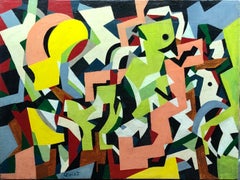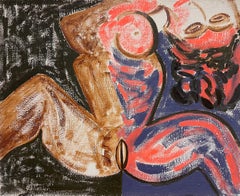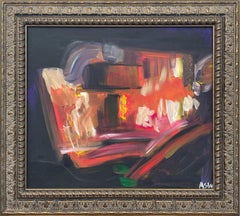Walter Quirt Art
Walter Quirt was an American artist born on November 24, 1902, in Iron River. He studied art at the Layton School of Art in Wisconsin from 1921–23 and later at the MacDowell Colony in New Hampshire in 1928. He was one of the most vital and active figures of the New York avant-garde art world of the 1930s. He worked for the Works Project Administration painting murals in the mid-1930s. He later moved to Minneapolis and taught art at the University of Minnesota from 1956–68. Early in his career, Quirt painted the social problems of his time in a realistic style. He also involved himself in left-wing causes by illustrating political magazines, such as The Masses and by joining radical artist groups. Quirt was a member of the John Reed Club. After working with socialist themes for many years, Quirt became one of the first American artists to experiment with Surrealism. By the time the Museum of Modern Art held its landmark 1936 exhibition on Surrealism, Walter Quirt was already defining his approach to Surrealism that had been displayed first as early as 1933. Quirt's attitude was that Salvador Dali and others had not taken full advantage of the possibilities that Surrealism offered and that artists using free association to explore the language of emotions on problems the public feels but has not the means for projecting into actualities was a positive move. Quirt's painting reflects a subliminal consciousness that is based on Hegelian theories of metaphysics and psychoanalysis and James Joyce’s literature. Quirt's dreams supplied this disturbing theatrical imagery of interlacing color and distorted clown figures. Quirt's style shifted late in his New York career when he abandoned the social realist politics and imagery that had dominated his early years as an artist and activist. One possible source for this new manner of imagery after the social realism that had dominated his earlier career might have been Roberto Matta's first one-person exhibition at Julien Levy Gallery in 1940. Almost certainly, Quirt would have seen these paintings that incorporated staining, overlays, wiping, lines of straight and smeared character and multi-faceted forms. Many of Quirt's paintings of this period follow this active and colorful format. Quirt's painting shows fragmented, sometimes ‘harlequin-esque’ figures. In doing so, he makes a uniquely American Surreal picture that, at the same time, resonates with the work of many European émigrés who had recently fled to America to escape Nazi persecution. He had a retrospective exhibition of his work in 1960 through the American Federation of Arts and he showed during his career at the Art Institute of Chicago, Whitney Museum of American Art, Metropolitan Museum of Art, Brooklyn Museum and the Detroit Institute of Arts. Quirt died on March 19, 1968, in Minneapolis, Minnesota.
1930s Abstract Walter Quirt Art
Canvas, Oil
Mid-20th Century Abstract Expressionist Walter Quirt Art
Canvas, Oil
1990s Abstract Expressionist Walter Quirt Art
Gesso, Acrylic, Oil, Mixed Media, Cotton Canvas, Varnish, Paint, Cotton,...
21st Century and Contemporary Abstract Expressionist Walter Quirt Art
Canvas, Oil
2010s Abstract Walter Quirt Art
Canvas, Oil
Late 20th Century Abstract Expressionist Walter Quirt Art
Canvas, Oil
2010s Abstract Walter Quirt Art
Canvas, Oil
1970s Abstract Geometric Walter Quirt Art
Canvas, Oil
2010s Abstract Walter Quirt Art
Canvas, Oil
2010s Abstract Walter Quirt Art
Canvas, Oil
2010s Abstract Impressionist Walter Quirt Art
Canvas, Oil
2010s Abstract Walter Quirt Art
Canvas, Oil
2010s Abstract Walter Quirt Art
Canvas, Oil


